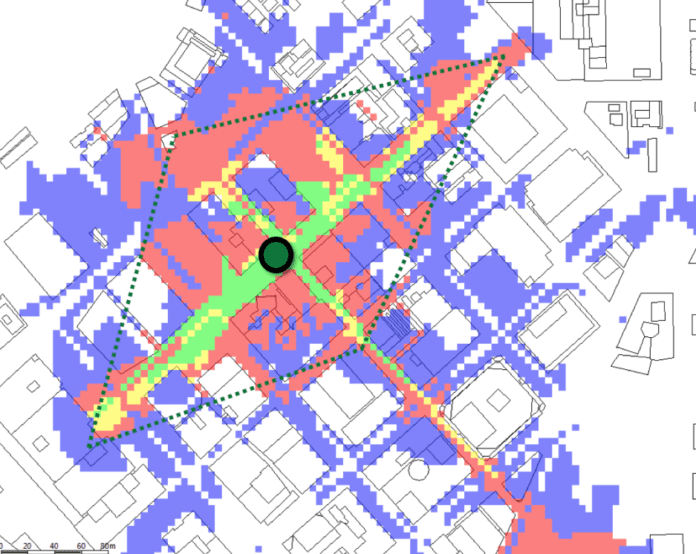Continued investments in network densification for both increasingly robust LTE networks, as well as 5G networks, represent a balancing act–location obviously matters, but considerations such as access to backhaul and interference from built-out urban environments all figure into the process. Here Sprint Regional Network Director Heather Campbell discusses the operator’s approach and provides insight into how a difference of just 25-meters can impact coverage.
“Network densification is really utilizing a mixture of cell site types in your tool box,” Campbell said in a recent webinar hosted by RCR Wireless News. “It starts with macro coverage and then from our larger cell sites it supplements then with small cells to get coverage and additional capacity down into the nooks and crannies, then femto and other in-building solutions to get further indoors.”
With 5G, densification is only going to increase, she said, as networks support not just enhanced mobile broadband but also massive internet of things implementations and latency-sensitive applications.
In terms of planning a small cell deployment in a dense, urban area, Campbell used a hypothetical radio site in Atlanta, Georgia, noting how nearby buildings shape RF propagation for good and for bad.
Subscribe now to get the daily newsletter from RCR Wireless News

In this image, the green dot represents a small cell location, green denotes the best coverage and blue the worst. “The coverage will end up shooting up and down the immediate cross streets,” Campbell said, with the diamond-shaped outline marking the general coverage area. “Those four blocks in the center would likely be solidly covered and most likely in-building too.” But what happens if that same small cell is moved 25-meters down the street?

With the shift, “The coverage pattern is different,” Campbell said. “That site is now cornered between a building and that’s instead sending the signal further out in the downward diagonal,” essentially flipping the coverage pattern. “This is all just by moving that location half a block over and it’s really those buildings in the middle that are causing just that difference.”
She continued: “The common area in the middle of both of the diamonds is where both locations would cover very well regardless of which one you would choose because you probably wouldn’t do both. The question becomes is the coverage along that upward diagonal more important to you and who and what you are trying to cover or is that downward diagonal more important? The point is that it really is a coverage trade-off and really thinking about how you could utilize the placement around the buildings to cover what you want to cover.”

